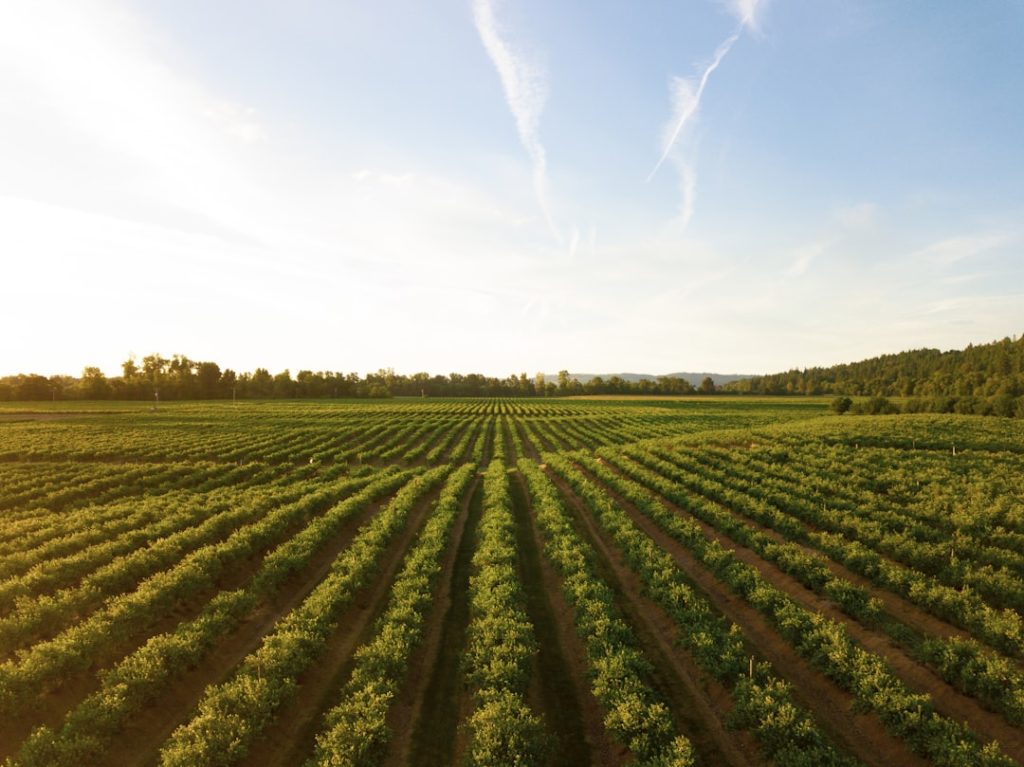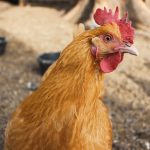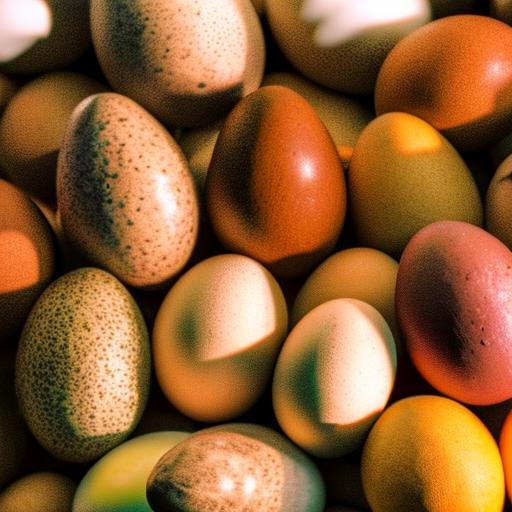Mealworms are a nutritious and protein-rich food source for chickens. They provide essential nutrients including protein, fat, fiber, amino acids, B vitamins, calcium, and phosphorus. These nutrients are important for chicken growth, development, bone health, and feather maintenance.
Mealworms offer chickens a good source of energy, helping them stay active and healthy. They may also support immune function, potentially aiding in disease resistance. Some evidence suggests that mealworms can improve egg quality by enhancing yolk color and nutritional content.
As a feed option, mealworms are cost-effective and sustainable. They can be bred at home, reducing reliance on commercial feeds and ensuring a consistent food supply. Mealworms can be fed to chickens live, dried, or ground into powder, offering versatility in feeding methods.
Overall, incorporating mealworms into a chicken’s diet may contribute to improved health, productivity, and egg quality. However, they should be used as a supplement to a balanced diet rather than a complete feed replacement.
Table of Contents
Key Takeaways
- Mealworms are a high-protein, nutritious treat for chickens, promoting healthy feathers and egg production.
- Setting up a mealworm breeding station requires a dark, warm environment with proper ventilation and moisture control.
- Choosing the right substrate for mealworm breeding is crucial, with options like oats, wheat bran, or cornmeal providing a nutritious base for the worms.
- Feeding and caring for mealworms involves providing a balanced diet of fruits, vegetables, and grains, along with regular cleaning and maintenance.
- Harvesting and storing mealworms for chicken feed can be done by separating the worms from their substrate and storing them in a cool, dry place.
- Incorporating mealworms into your chickens’ diet can be done gradually, starting with small amounts and increasing as the chickens become accustomed to them.
- Monitoring and maintaining a healthy mealworm population involves regular checks for mold, mites, and proper temperature and moisture levels.
Setting Up a Mealworm Breeding Station
Creating a Suitable Environment
Next, you’ll need to create a substrate for the mealworms to live in. This can be done by adding a layer of wheat bran or oats to the bottom of the container, which will serve as bedding for the mealworms. Once the substrate is in place, you can add a small amount of food for the mealworms, such as fruits or vegetables.
Maintenance and Care
It’s essential to regularly clean and maintain the breeding station to ensure a healthy environment for the mealworms to thrive. This includes removing any uneaten food or waste, as well as regularly replacing the substrate to prevent mold or bacteria from developing.
Optimal Breeding Conditions
In addition to the breeding station, it’s crucial to consider the temperature and humidity levels in the environment where the mealworms are being bred. Mealworms thrive in warm and dry conditions, with an ideal temperature range of 70-80°F (21-27°C) and a humidity level of around 70%. It’s essential to monitor these conditions regularly and make any necessary adjustments to ensure that the mealworms remain healthy and productive.
By providing a suitable breeding environment, you can ensure a steady supply of mealworms for your chickens’ diet.
Choosing the Right Substrate for Mealworm Breeding

Choosing the right substrate is crucial for successful mealworm breeding. The substrate serves as the bedding for the mealworms and provides them with a suitable environment to live and reproduce. Wheat bran is one of the most commonly used substrates for mealworm breeding, as it provides a nutritious and digestible food source for the mealworms.
Oats are another popular option, as they are rich in nutrients and can help support the growth and development of the mealworms. It’s important to ensure that the substrate is free from any contaminants or pesticides that could harm the mealworms or the chickens that will eventually consume them. Additionally, the substrate should be kept dry to prevent mold or bacteria from developing, which could be harmful to the mealworms.
Regularly replacing the substrate is also important to maintain a clean and healthy environment for the mealworms to thrive. By choosing the right substrate and maintaining it properly, you can ensure a successful mealworm breeding operation that provides a sustainable food source for your chickens. Another consideration when choosing a substrate is its ability to absorb moisture.
Mealworms require a dry environment to thrive, so it’s important to select a substrate that can effectively absorb any excess moisture and prevent mold or bacteria from developing. Additionally, the substrate should provide enough structure for the mealworms to burrow and lay their eggs, as well as provide a suitable surface for them to feed on. By carefully selecting and maintaining the right substrate, you can create an optimal breeding environment for mealworms and ensure a consistent food source for your chickens.
Feeding and Caring for Mealworms
Feeding and caring for mealworms is relatively simple and requires minimal effort. Mealworms can be fed a variety of foods, including fruits, vegetables, grains, and commercial feed designed specifically for them. It’s important to provide a balanced diet for the mealworms to ensure that they remain healthy and nutritious for your chickens.
Additionally, it’s important to regularly clean and maintain their living environment to prevent mold or bacteria from developing. Mealworms should be provided with fresh food on a regular basis to ensure that they have access to essential nutrients. It’s important to monitor their food consumption and adjust accordingly to prevent overfeeding or underfeeding.
Additionally, it’s important to provide a shallow dish of water for the mealworms to drink from, as they require hydration to remain healthy. By providing proper care and nutrition for the mealworms, you can ensure that they remain a high-quality food source for your chickens. In addition to feeding, it’s important to regularly clean and maintain the breeding station where the mealworms are kept.
This includes removing any uneaten food or waste, as well as regularly replacing the substrate to prevent mold or bacteria from developing. It’s also important to monitor the temperature and humidity levels in their environment to ensure that they remain within suitable ranges for optimal breeding conditions. By providing proper care and maintenance for the mealworms, you can ensure a consistent supply of nutritious food for your chickens.
Harvesting and Storing Mealworms for Chicken Feed
Harvesting mealworms is a simple process that involves separating them from their substrate and preparing them for storage or immediate consumption by your chickens. To harvest mealworms, you can gently sift through the substrate with your hands or use a fine mesh sieve to separate them from their bedding. Once separated, you can transfer the mealworms into a separate container or storage bag for feeding or further processing.
If you plan on storing the harvested mealworms for future use, it’s important to properly prepare and store them to maintain their quality and nutritional value. Drying mealworms is one common method of preservation, which involves spreading them out on a tray or baking sheet and allowing them to air dry in a warm and well-ventilated area. Once dried, they can be stored in an airtight container at room temperature for several months.
Another method of storing mealworms is freezing them, which involves placing them in a sealed plastic bag or container and storing them in the freezer. Frozen mealworms can be stored for several months and thawed as needed for feeding your chickens. It’s important to label and date any stored mealworms to ensure that they are used within a reasonable timeframe.
Incorporating Mealworms into Your Chickens’ Diet

Feeding Live Mealworms
Live mealworms can be offered directly to your chickens as a treat or supplement to their regular feed. They can be placed in a shallow dish or scattered on the ground for your chickens to peck at.
The Convenience of Dried Mealworms
Dried mealworms are another convenient option for feeding your chickens, as they can be easily stored and used as needed. Dried mealworms can be offered as a standalone treat or mixed into your chickens’ regular feed to provide additional protein and nutrients. They are also less perishable than live mealworms, making them a convenient option for long-term storage.
Using Mealworm Powder
Ground mealworm powder is another way to incorporate this nutritious food source into your chickens’ diet. Mealworm powder can be mixed into homemade feed recipes or commercial feed to boost its nutritional value. It can also be sprinkled directly onto your chickens’ regular feed as a supplement.
Monitoring and Maintaining a Healthy Mealworm Population
Monitoring and maintaining a healthy mealworm population is essential for ensuring a consistent supply of nutritious food for your chickens. Regularly checking on the breeding station and its inhabitants is important to ensure that the mealworms remain healthy and productive. This includes monitoring their food consumption, cleanliness of their environment, and overall well-being.
It’s important to regularly clean and maintain the breeding station where the mealworms are kept to prevent mold or bacteria from developing. This includes removing any uneaten food or waste, as well as regularly replacing the substrate with fresh bedding material. Additionally, it’s important to monitor the temperature and humidity levels in their environment to ensure that they remain within suitable ranges for optimal breeding conditions.
Making any necessary adjustments to these conditions will help ensure that your mealworm population remains healthy and productive. By providing proper care and maintenance for your mealworm population, you can ensure that they continue to provide a sustainable food source for your chickens’ diet. Regular monitoring and maintenance will help you identify any issues early on and take corrective action before they impact your ability to provide nutritious food for your chickens.
In conclusion, incorporating mealworms into your chickens’ diet offers numerous benefits in terms of nutrition, cost-effectiveness, sustainability, and overall chicken health. Setting up a mealworm breeding station is relatively simple and requires minimal equipment while choosing the right substrate is crucial for successful breeding operations. Feeding and caring for mealworms is relatively simple but requires regular maintenance while harvesting and storing them properly ensures their quality over time.
Finally, incorporating mealworms into your chickens’ diet is an easy way to provide them with additional nutrition while monitoring and maintaining a healthy population ensures a consistent supply of nutritious food for your chickens’ diet.
If you’re interested in breeding mealworms for chickens, you may also want to learn about duck mating season. Check out this article to understand the best time for ducks to mate and how to support their breeding habits. Understanding the mating season can help you plan for the future and ensure a healthy and productive flock of ducks.
FAQs
What are mealworms?
Mealworms are the larval form of the darkling beetle and are commonly used as a source of protein for chickens and other animals.
Why are mealworms a good source of food for chickens?
Mealworms are high in protein, making them a nutritious and natural supplement to a chicken’s diet. They also contain essential nutrients such as vitamins and minerals.
How can I breed mealworms for my chickens?
To breed mealworms, you will need a container with a lid, oats or bran for bedding, and a constant supply of food such as fruits and vegetables for the mealworms to eat. You will also need to keep the container in a warm and dark environment.
How long does it take to breed mealworms for chickens?
It takes about 10 weeks for mealworms to complete their life cycle, from egg to pupa to adult beetle. During this time, they will grow and reproduce, providing a continuous supply of mealworms for your chickens.
Are there any health risks associated with feeding mealworms to chickens?
Feeding mealworms to chickens is generally safe, but it’s important to ensure that the mealworms are raised in a clean and hygienic environment to prevent the spread of disease. Additionally, it’s important to provide a balanced diet for your chickens and not rely solely on mealworms as a source of food.
Meet Walter, the feathered-friend fanatic of Florida! Nestled in the sunshine state, Walter struts through life with his feathered companions, clucking his way to happiness. With a coop that’s fancier than a five-star hotel, he’s the Don Juan of the chicken world. When he’s not teaching his hens to do the cha-cha, you’ll find him in a heated debate with his prized rooster, Sir Clucks-a-Lot. Walter’s poultry passion is no yolk; he’s the sunny-side-up guy you never knew you needed in your flock of friends!







